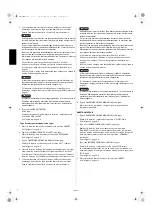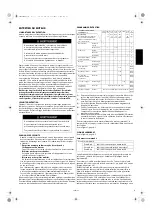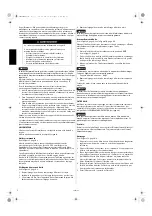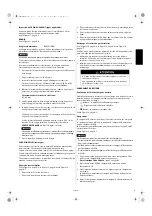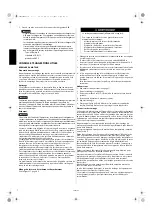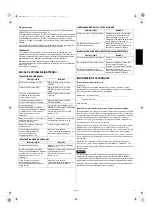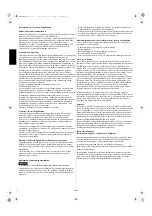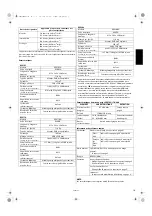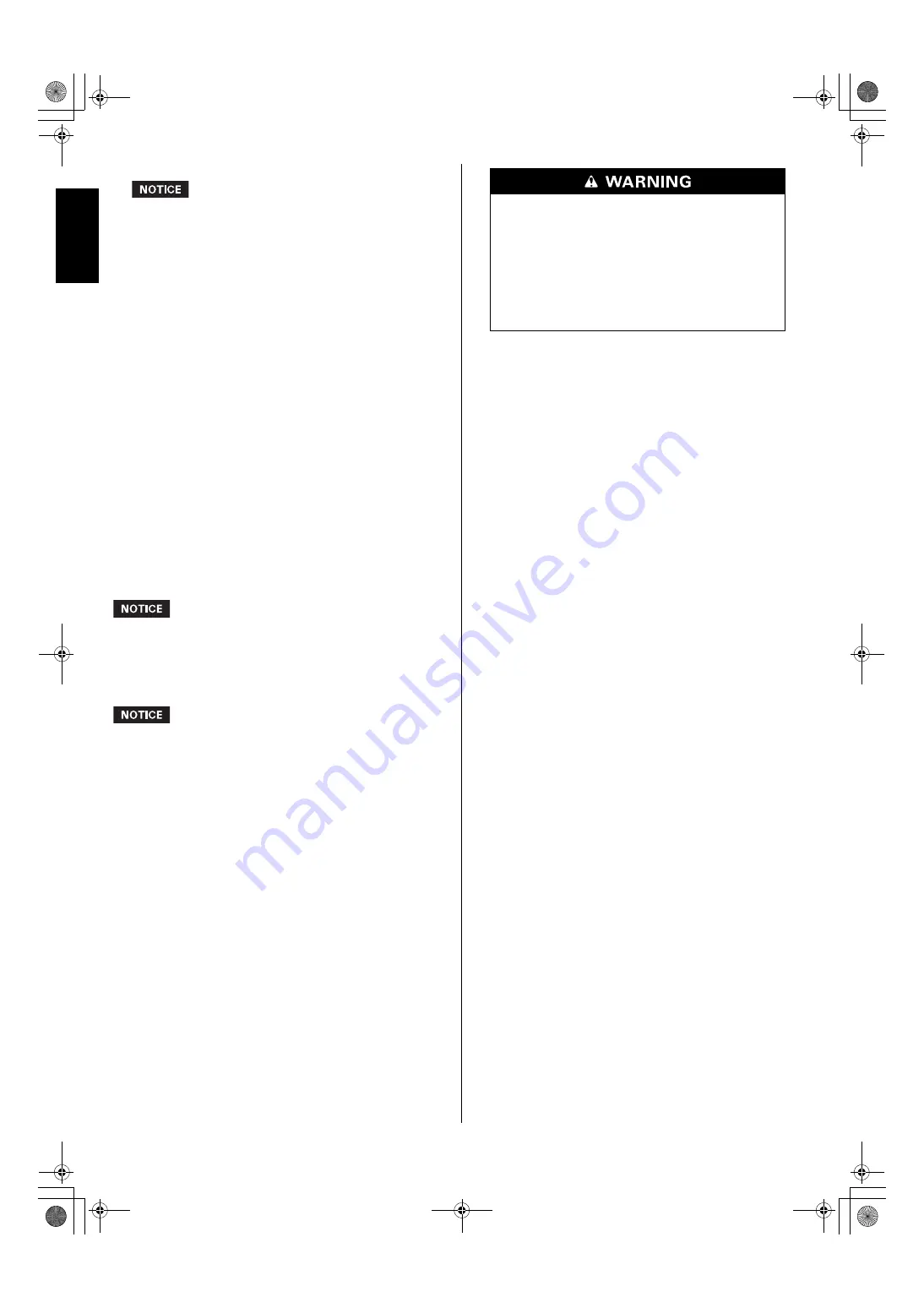
7
ENGLISH
5. Attach the rubber cap to USB charging port.
• Attach the rubber cap to USB charging port securely after charging. If
the rubber cap remains off, the USB charging port may rust and it may
not be possible to charge.
• When starting the engine, make sure to remove the external USB
charger from the engine before starting.
It is possible to use a commercially available charger (such as mobile
battery for smartphone charge) other than the external USB charger
included in the package. The warranty covers:
- Type: USB micro B
- Standard: USB BC1.2
- CE certified product
HELPFUL TIPS & SUGGESTIONS
STORING YOUR ENGINE
Storage Preparation
Proper storage preparation is essential for keeping your engine trouble-
free and looking good. The following steps will help to keep rust and
corrosion from impairing your engine’s function and appearance, and
will make the engine easier to start when you use it again.
Cleaning
If the engine has been running, allow it to cool for at least half an hour
before cleaning. Clean all exterior surfaces, touch up any damaged paint,
and coat other areas that may rust with a light film of oil.
Using a garden hose or pressure washing equipment can force water into the
air cleaner or muffler opening. Water in the air cleaner will soak the air filter,
and water that passes through the air filter or muffler can enter the cylinder,
causing damage.
Fuel
Depending on the region where you operate your equipment, fuel
formulations may deteriorate and oxidize rapidly. Fuel deterioration and
oxidation can occur in as little as 30 days and may cause damage to the
carburetor and/or fuel system. Please check with your servicing dealer for
local storage recommendations.
Gasoline will oxidize and deteriorate in storage. Deteriorated gasoline
will cause hard starting, and it leaves gum deposits that clog the fuel
system. If the gasoline in your engine deteriorates during storage, you
may need to have the carburetor and other fuel system components
serviced or replaced.
The length of time that gasoline can be left in your fuel tank and
carburetor without causing functional problems will vary with such
factors as gasoline blend, your storage temperatures, and whether the
fuel tank is partially or completely filled. The air in a partially filled fuel
tank promotes fuel deterioration. Very warm storage temperatures
accelerate fuel deterioration. Fuel deterioration problems may occur
within 30 days from keeping the fuel in the fuel tank, or even less if the
gasoline was not fresh when you filled the fuel tank.
Fuel system damage or engine performance problems resulting from
neglected storage preparation are not covered under the Warranty.
Draining the Fuel Tank and Carburetor
See Figure 17, page A-5.
1. Drain the fuel tank and carburetor into an approved gasoline
container.
2. Turn the fuel valve lever to the ON position and loosen the carburetor
drain bolt by turning 1 to 2 turns counterclockwise.
3. After all fuel has drained, tighten the carburetor drain bolt securely,
turn the fuel valve lever to the OFF position.
4. If you cannot drain from the carburetor, drain the fuel tank into an
approved gasoline container using a commercially available hand
pump. Do not use an electric pump.
Operate the engine until it stops from the lack of fuel.
Engine Oil
1. Change the engine oil (see page 5).
2. Remove the spark plug (see page 6).
3. Pour a teaspoon 5–10 cm
3
of clean engine oil into the cylinder.
4. Drive the starter several time.
5. Reinstall the spark plug.
6. Coat areas that may rust with a light film of oil. Cover the engine to
keep out dust.
Storage Precautions
If your engine will be stored with gasoline in the fuel tank and carburetor,
it is important to reduce the hazard of gasoline vapor ignition. Select a
well ventilated storage area away from any appliance that operates with
a flame, such as a furnace, water heater, or clothes dryer. Also avoid any
area with a spark-producing electric motor, or where power tools are
operated.
Failure to properly handle the battery while storing the engine may result
in deterioration of the battery performance and service life.
It is recommended to store the engine at 5 to 40°C.
Avoid storage areas with high temperature above 40°C and with high
humidity, and storage in an environment with severe temperature
changes. Keep away from direct sunlight, rain, or dew.
Storage areas with high humidity may promote the engine rust and
corrosion. And also, storage at high temperatures may shorten battery
service life.
Keep the engine level in storage. Tilting can cause fuel or oil leakage.
With the engine and exhaust system cool, cover the engine to keep out
dust. A hot engine and exhaust system can ignite or melt some materials.
Do not use a plastic sheet as a dust cover.
A nonporous cover will trap moisture around the engine, promoting rust
and corrosion.
When storing the engine, store with the brake lever of the equipment
powered by this engine released.
If the engine will be stored for more than 1 month, a storage after
charging until the battery indicator lights on is recommended.
Gasoline is highly flammable and explosive.
You can be burned or seriously injured when handling
fuel.
• Stop the engine and let it cool before handling fuel.
• Keep heat, sparks, and flame away.
• Handle fuel only outdoors.
• Keep away from your vehicle.
• Wipe up spills immediately.
3RZ9S8000.book 7 ページ 2019年9月3日 火曜日 午後4時17分




















